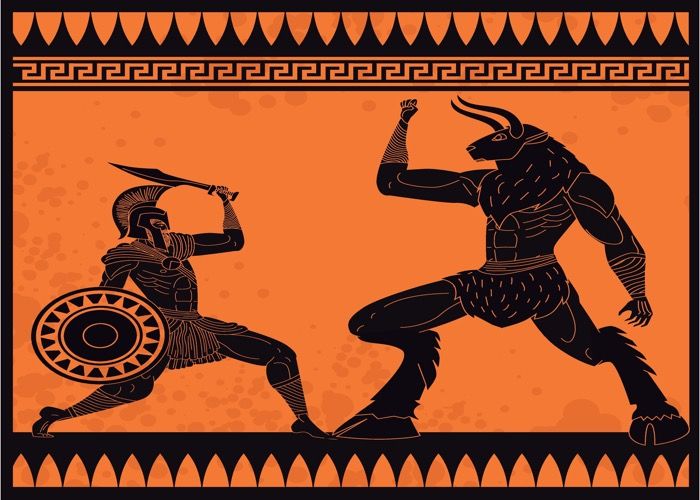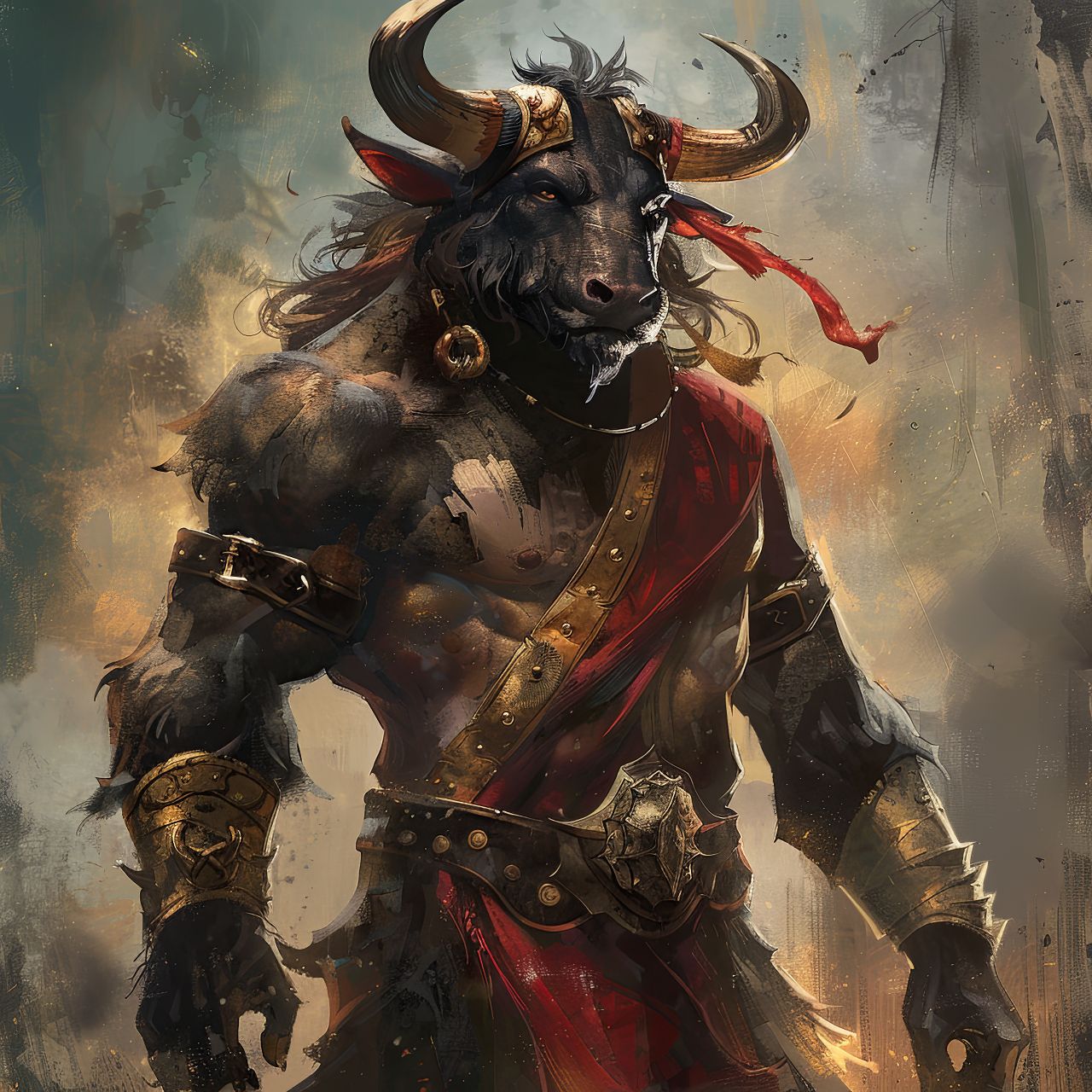Minotaur
Basic Information
Anatomy
Minotaurs are large, muscular humanoid monsters with the head of a bull, and the upper torso, hands, and body of a human. Minotaurs have clawed hands and hooved feet. Their fur is most commonly brown but minotaurs are occasionally born with hues of grey, red or black. The fur often covers thier forearms, chest, abdomen, and legs. Males can reach up to 9 feet in height, while females are generally only 7 feet.
The creatures' iconic feature – their horns – are very similar to those on a normal bull, slightly curving forward. Both males and females had similarly shaped huge horns.
Additional Information
Social Structure
Minotaurs organize themselves into tribes of extended families or clans, called Kawan. Their culture is very martially oriented. Minotaur tribes generally fight each other for territory, but have been known to ally together against larger threats.
Minotaurs, either despite their aggressive natures or because of them, follow a rigid code of conduct. In that code, hospitality in minotaur culture is considered to be absolute. When entering a minotaur’s home guests are given a small piece of meat and salt to be consumed. Once the meat and salt is consumed the guest is considered to be members of their household until their departure. Minotaurs never break the rites of hospitality.
Arcane magic is not respected among minotaurs. It is occasionally accepted as a necessary tool but it is rare to see a mage rise to leadership. Shamans, on the other hand, are respected for their healing and oracular powers, and frequently become leaders of tribes.
Minotaurs, either despite their aggressive natures or because of them, follow a rigid code of conduct. In that code, hospitality in minotaur culture is considered to be absolute. When entering a minotaur’s home guests are given a small piece of meat and salt to be consumed. Once the meat and salt is consumed the guest is considered to be members of their household until their departure. Minotaurs never break the rites of hospitality.
Arcane magic is not respected among minotaurs. It is occasionally accepted as a necessary tool but it is rare to see a mage rise to leadership. Shamans, on the other hand, are respected for their healing and oracular powers, and frequently become leaders of tribes.
Perception and Sensory Capabilities
Minotaurs are natural navigators. They are especially adept at finding their way through complex terrain, like mazes.
Civilization and Culture
Major Organizations
Minotaurs gather in groups of extended family circles called tribes or Kawan. While there are a large number of kawan in Hobriland, some of the more well known include:
- The Iron Claws - The Iron Claws live near the dwarf settlement of Heim-Askorin, and will infrequently trade labor for metal weapons, armor, and tools. It is said that their village is defended by a maze filled with cunning traps designed by either a Dwarf engineer, or the Cyclopes who live nearby. The Iron Claws spend much of their time defending against tribes of ogres and hill giants that infest the foothills near their village.
- The Swift Wind - The Swift Wind kawan are that rare tribe that does not have an established village, but instead roams the grasslands, following their goat herds. While one of the more aggressive tribes, they are also one of the first to offer hospitality to strangers, presuming those strangers can meet their rigid and cryptic code of conduct.
- The Stone Horns - The Stone Horns kawan control a swath of empty grassland, but their village is actually underground, connected to the surface through confusing paths of natural caves and tunnels. The Stone Horns are insular and distrustful of outsiders, even other Minotaurs. They are more likely to attack and kill strangers than to speak with them.
- The Thunder Lore - The Thunder Lore kawan have their village in the central area of the grasslands. One of the larger tribes, the villages is surrounded by a maze made of walls of piled stone ten feet tall. The Thunder Lore are known for their shamans, who reportedly can control the weather.
Culture and Cultural Heritage
Honor is extremely important to minotaurs. A minotaur's word is their life, and as such they are careful about giving it freely. Minotaurs who pledged themselves in service are often willing to die before breaking their word. Minotaurs who break their word are hunted down by their clans and have their horns removed. A minotaur without horns is no longer considered a minotaur and their kawan destroys all mention of them in their history.
Common Myths and Legends
Minotaurs revere two gods:
- Ariadne - a goddess that gave the minotaur people knowledge of maze-building to protect their homes, along with weaving, dancing, and other arts and crafts. Ariadne is often seen wielding a two-headed axe.
- Asterius - known as the father of all minotaurs, Asterius is a warrior and father figure in minotaur culture.
Game Traits: 7 HPs
- Strength of the Bull: When Hit with an attack, a Minotaur you may choose to take 1 extra damage. If they do, on their next turn, all of their attacks get +1 damage.
- Death before Dishonor: Once per day a Minotaur may choose to take no damage from an attack.
- One against Many: When outnumbered a Minotaur's attacks do 1 extra damage.
Geographic Distribution



Comments